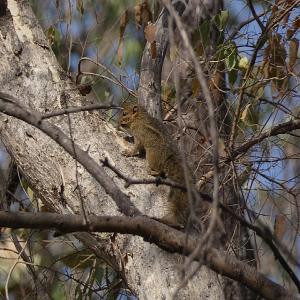 Smart Citations
Smart CitationsSee how this article has been cited at scite.ai
scite shows how a scientific paper has been cited by providing the context of the citation, a classification describing whether it supports, mentions, or contrasts the cited claim, and a label indicating in which section the citation was made.
Biogeographic analysis of the composition of the mammalian fauna of Togo (West Africa)
The Dahomey Gap in West Africa is a human-derived savannah-like vegetation zone interspersed by patches of moist forest, with large rainforest blocks at both West (Upper Guinean Forest) and East (Lower Guinean Forest) of its limits. Togo is a tiny country situated in the middle of the Dahomey Gap. In this paper, a biogeographic analysis of the composition of the mammalian fauna of Togo is presented, by classifying each species on the basis of five distinct ecological distribution patterns. The greatest proportion of species were Pan-African (88.0%). Excluding the Pan-African species from the analysis, the mammalian fauna appeared to be affiliated similarly to both Upper Guinean and Lower Guinean Forest blocks. Only three endemic species were observed, all of them being rodents: Cryptomys zechi (Batyergidae), Funisciurus substriatus (Sciuridae), and Leimacomys buettneri (Muridae). Considering only the multispecies genera, the great majority did not show any barrier effect by the Dahomey Gap on their own species, as all of them did occur on both sides of Togo. A barrier effect by the Dahomey Gap was uncovered in 8 genera; overall, the Dahomey Gap apparently showed a barrier effect on 28.6% of the multispecies genera. It is emphasized that the full understanding of the role of the Dahomey Gap as a biogeographic barrier and of its island forests as centers of endemism is impeded by the lack of biogeographic reviews and meta-analyses on the composition of faunal and floral groups of the entire region.
How to Cite

This work is licensed under a Creative Commons Attribution-NonCommercial 4.0 International License.
PAGEPress has chosen to apply the Creative Commons Attribution NonCommercial 4.0 International License (CC BY-NC 4.0) to all manuscripts to be published.








